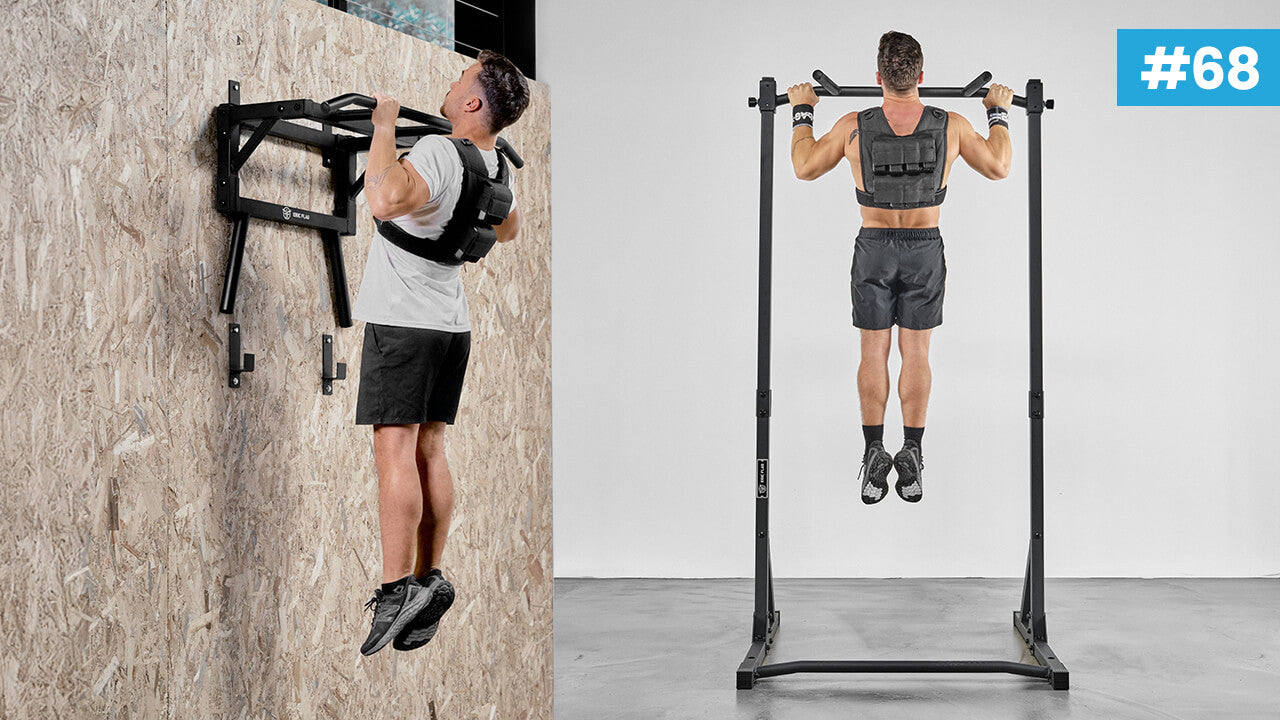Goblet Squat: The ultra-efficient leg-building exercise
The goblet squat is renowned for its many benefits in strengthening leg muscles, and has become a flagship exercise in bodybuilding. This variation on the traditional squat, performed with the weight held close to the chest, improves stability and control, making it an excellent alternative to squats.
This exercise mainly targets the quadriceps, glutes and hamstrings for greater stability. Using a dumbbell or kettlebell for the goblet squat helps distribute the weight evenly, reducing pressure on the lower back.
Why choose the goblet squat to build leg muscles?

Benefits for leg muscles
The goblet squat offers numerous advantages for strengthening the legs. This exercise effectively targets the quadriceps, glutes and hamstrings, thanks to the position of the weight in front of the chest, which enables these muscles to be precisely targeted while protecting the lower back.
What's more, the goblet squat increases the volume of muscular work without the risks associated with the heavy loads typical of barbell squats. This means you can strengthen your legs and glutes without jeopardizing the health of your spine. This exercise is particularly beneficial for those with back problems or who wish to diversify their training program.
Benefits for mobility and balance
The goblet squat is also remarkable for improving mobility and balance. Positioning the weight in front of the body simplifies learning the correct squat technique and promotes correct posture, contributing to better hip and knee mobility.
Regular practice of the goblet squat enables you to achieve a greater range of motion, improving your ability to perform deeper, more efficient squats.
Safe and easy to learn
One of the major advantages of the goblet squat is that it's safe and easy to learn. Unlike barbell squats, which can be intimidating and risky for novices, the goblet squat is more accessible and requires less load. Holding the weight in front of the chest ensures a centered center of gravity, reducing the risk of injury and making it easier to acquire the proper technique.
How to perform a perfect goblet squat?

Choice of equipment
To get off to the best possible start with the goblet squat, the choice of equipment is crucial. Opt for a kettlebell or dumbbell, as you prefer.
Our Eric Flag kettlebell can be adjusted from 1 to 20kg and features 2 different handles. Perfect for practicing the goblet squat!
Starting position and posture
The initial position is crucial to the success of a goblet squat.
Movement execution
About the descent :
On the way up :
Integrate the goblet squat into your training routine
Warm-up and preparation
Before launching into the goblet squat, start with a good warm-up. Perform light sets of 5 to 10 repetitions to mobilize your joints (ankles, knees, hips) and activate your core and leg muscles.
Complement this warm-up with mobility movements, such as hip and knee rotations, to increase flexibility and reduce the risk of injury.
Intensify exercise for greater challenge
To intensify the goblet squat, you can explore different variations depending on your objectives:
- The"goblet squat with jump" adds an explosive dimension, boosts your cardiovascular fitness and puts the legs to the test.
- Thesingle-leg goblet squat improves balance, stability and unilateral strength.
- The"pause goblet squat", with a pause at the bottom of the movement, increases the time under tension and strengthens the stabilizing muscles.
Each option brings a new challenge to your training!
Conclusion
In short, the goblet squat stands out as a complete and effective exercise for strengthening leg muscles, improving core stability and perfecting squat technique. It mainly trains the quadriceps, glutes and hamstrings, while mobilizing the core and postural muscles. This versatility makes it suitable for all fitness levels.
Accessible to all, it offers multiple benefits: better squat execution, increased stability, and enhanced hip and ankle mobility!
Whether you're a beginner, athlete or rehabber, incorporating the goblet squat into your training program can transform your fitness. Simple yet powerful, it improves strength, mobility and posture.
I hope you enjoyed this article. Don't hesitate to comment if you did 😃
See you soon.
Eric Flag





Commenta
Questo sito è protetto da hCaptcha e applica le Norme sulla privacy e i Termini di servizio di hCaptcha.